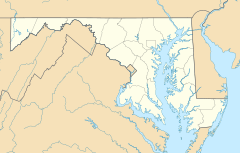Dickens, Maryland facts for kids
Quick facts for kids
Dickens, Maryland
|
|
|---|---|
| Country | |
| State | |
| County | |
| Elevation | 781 ft (238 m) |
| Time zone | UTC-5 (Eastern (EST)) |
| • Summer (DST) | UTC-4 (EDT) |
| GNIS feature ID | 588642 |
Dickens is a small, quiet place in Allegany County, Maryland, in the United States. It's known as an "unincorporated community." This means it's a group of homes and businesses that isn't officially a town or city with its own local government. Instead, it's part of the larger county.
Contents
What is Dickens, Maryland?
Dickens is a special kind of place called an unincorporated community. Imagine a neighborhood or a small village that doesn't have its own mayor or city council. That's what an unincorporated community is. It's still part of a larger county, which provides services like roads and police.
Where is Dickens Located?
Dickens is found in Allegany County, which is in the western part of the state of Maryland. Maryland is one of the states in the United States. It's a place with a lot of history and natural beauty.
Historic Places in Dickens
Even though Dickens is a small community, it has some important historical sites. These places are so special that they are listed on the National Register of Historic Places. This is an official list kept by the U.S. government. It helps protect buildings, sites, and objects that are important to American history.
Big Bottom Farm
One of the historic sites in Dickens is called Big Bottom Farm. Farms like this often show us how people lived and worked many years ago. They can also tell us about the history of farming in the area.
Phoenix Mill Farm
Another important site is Phoenix Mill Farm. Mills were very important in the past. They used water power to grind grain into flour or to saw wood. This farm likely has a historic mill that was a key part of the community long ago.
Union Grove Schoolhouse
The Union Grove Schoolhouse is also on the list. Schoolhouses are fascinating because they show us what education was like for kids in the past. They were often one-room buildings where children of all ages learned together.



